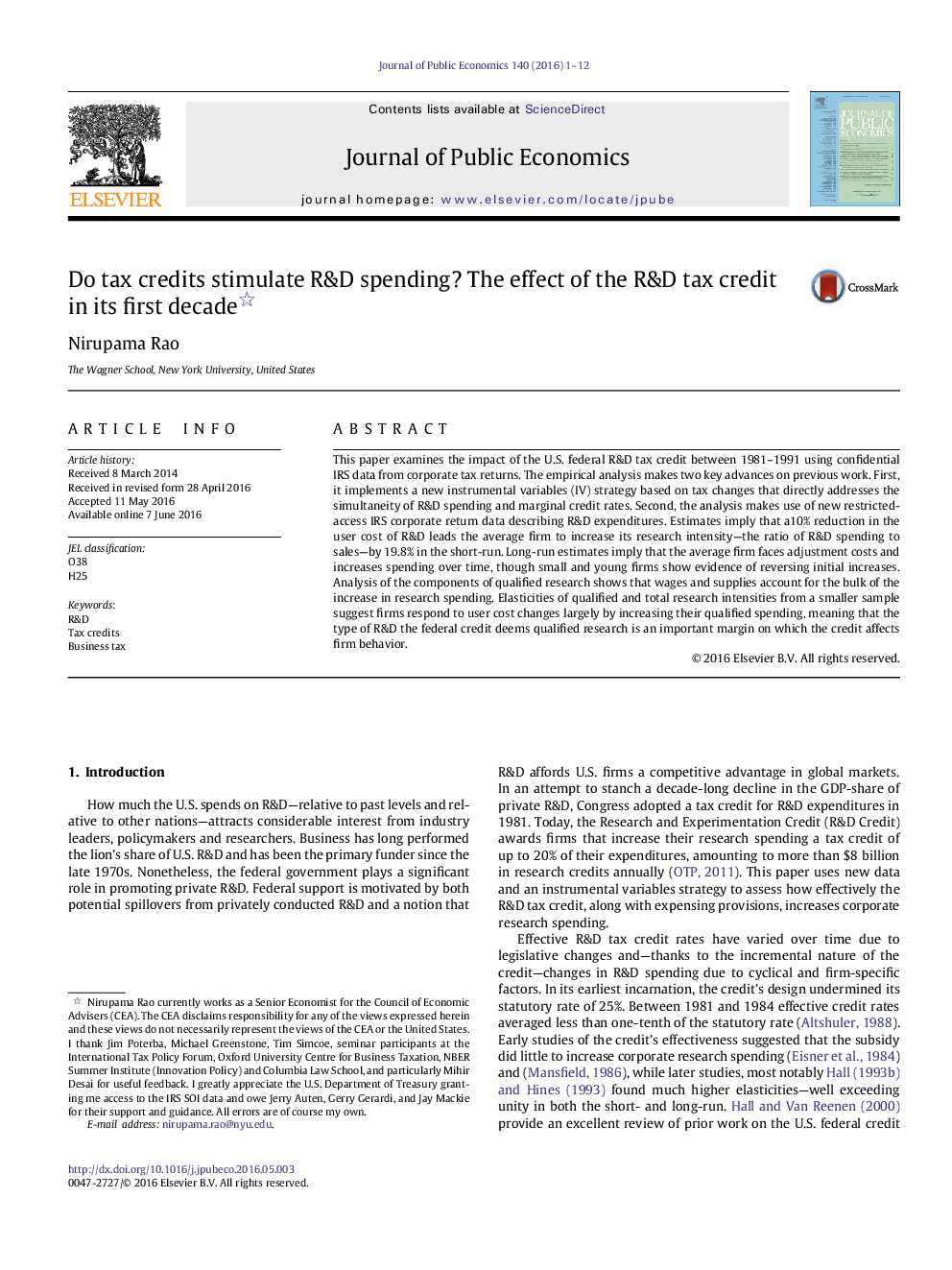| Article ID | Journal | Published Year | Pages | File Type |
|---|---|---|---|---|
| 968578 | Journal of Public Economics | 2016 | 12 Pages |
•Examines impact of the R&D tax credit on corporate R&D using confidential IRS data.•Implements new instrumental variables strategy based on tax changes.•Finds that a 10% tax subsidy leads to an 19.8% increase in research intensity.•R&D that qualifies for the credit increases more than total R&D.
This paper examines the impact of the U.S. federal R&D tax credit between 1981–1991 using confidential IRS data from corporate tax returns. The empirical analysis makes two key advances on previous work. First, it implements a new instrumental variables (IV) strategy based on tax changes that directly addresses the simultaneity of R&D spending and marginal credit rates. Second, the analysis makes use of new restricted-access IRS corporate return data describing R&D expenditures. Estimates imply that a10% reduction in the user cost of R&D leads the average firm to increase its research intensity—the ratio of R&D spending to sales—by 19.8% in the short-run. Long-run estimates imply that the average firm faces adjustment costs and increases spending over time, though small and young firms show evidence of reversing initial increases. Analysis of the components of qualified research shows that wages and supplies account for the bulk of the increase in research spending. Elasticities of qualified and total research intensities from a smaller sample suggest firms respond to user cost changes largely by increasing their qualified spending, meaning that the type of R&D the federal credit deems qualified research is an important margin on which the credit affects firm behavior.
